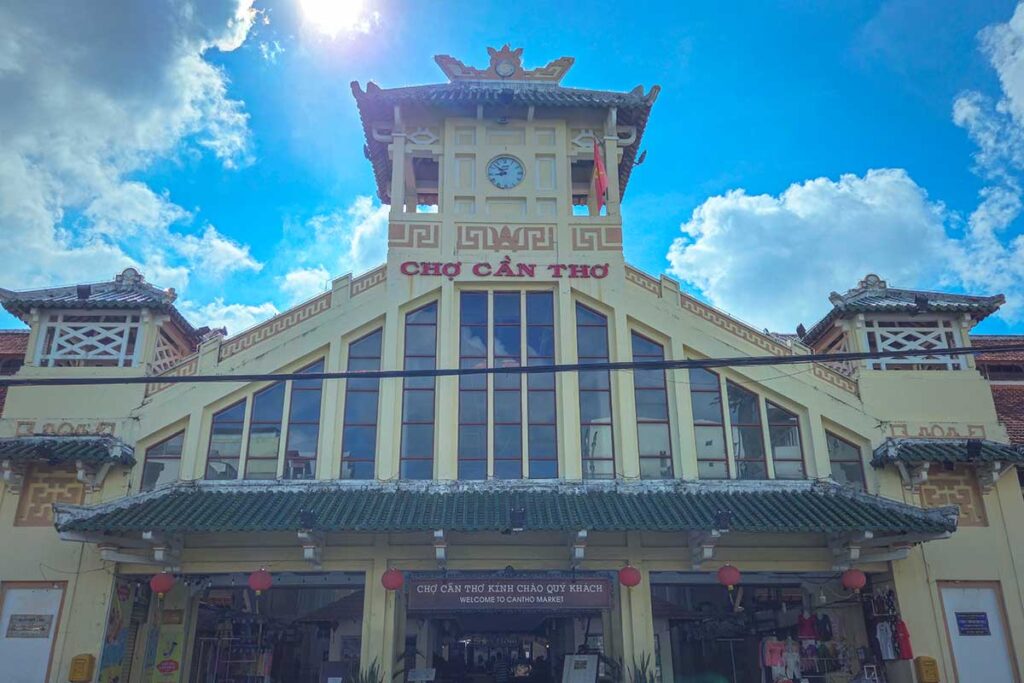What is Can Tho Market?
Location & Role in daily life
Can Tho Market sits on Hai Ba Trung Street, right on the river at Ninh Kieu Wharf. While it was once a key spot for daily groceries and trade, its role has shifted over time. These days, it feels more like a mix of souvenir shops, clothing stalls, and snack vendors, with only limited signs of the old “local grocery” function. For visitors, it’s more about browsing, eating, or enjoying the riverside setting than seeing a full-scale working market.
History
The market building dates back to the French colonial period, constructed between 1912 and 1915 by the same contractors who built Ben Thanh Market in Saigon. At the time, it was one of the Mekong Delta’s most important trading hubs, with goods from across the region passing through here. Over the decades, it has been renovated but still retains its historic look, giving it both a practical and symbolic role in Can Tho’s development.
Architecture & Atmosphere
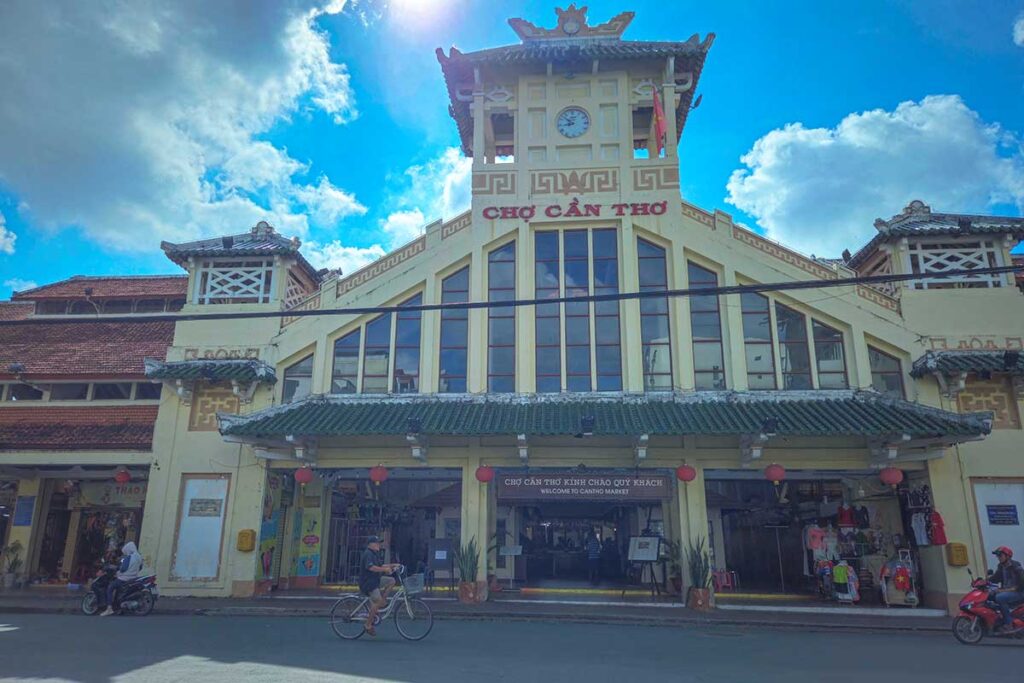
The structure combines colonial design with traditional touches: arched windows, tiled roofs, and a riverside setting that comes alive at night under the lights. It’s not as polished or dramatic as Hoi An’s old town markets, but it does have a quiet charm if you take the time to notice. Inside, the atmosphere is less romantic and more down-to-earth: narrow walkways, local chatter, and stalls stacked with everything from fruit to household items.
Highlights of visiting today
1. Shopping & Souvenirs
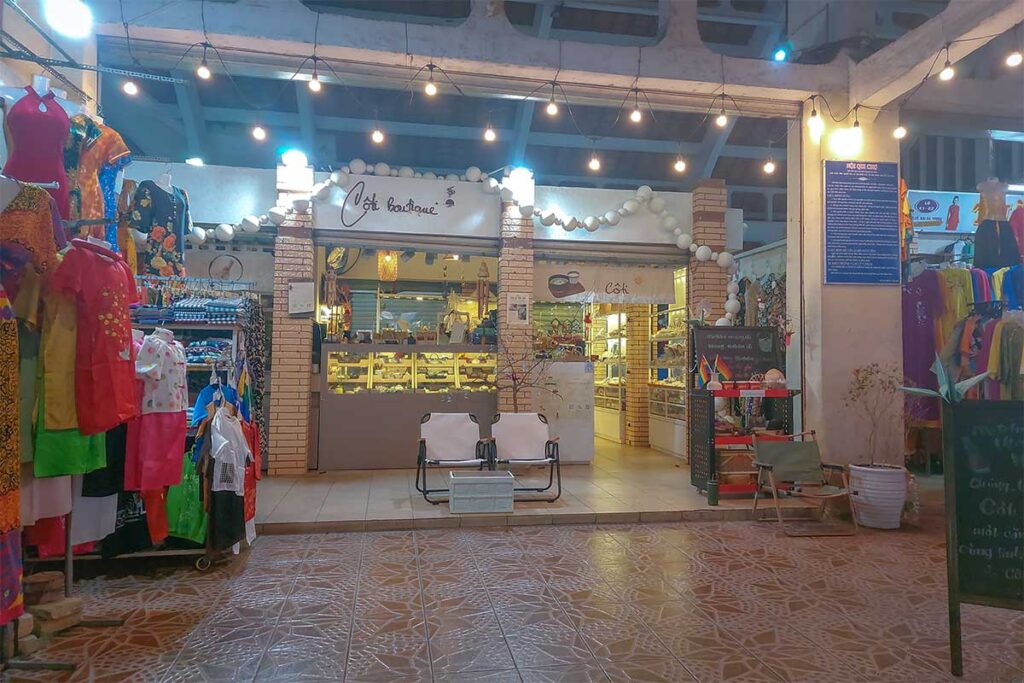
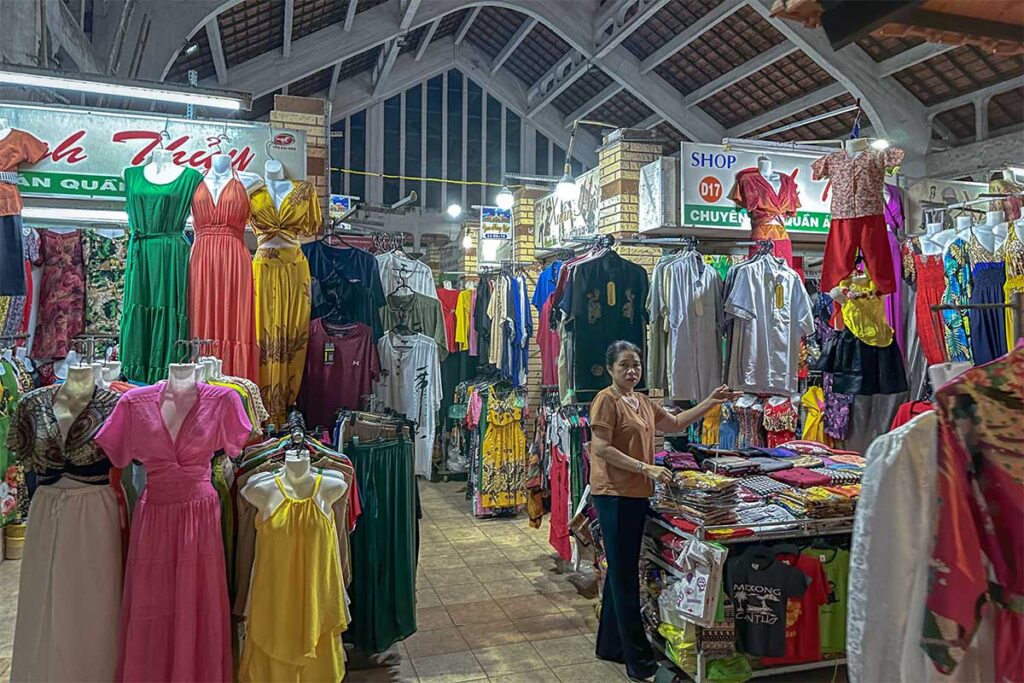
Inside Can Tho Market you’ll find a mix of everyday items and souvenirs. There are stalls selling clothing, simple trinkets, and handicrafts, though it doesn’t feel like a place entirely aimed at tourists. If you’re looking for a small gift to take home, you’ll find some options here, but the selection is limited compared to bigger markets in Saigon or Hanoi. It’s more a quick browse than a full-on shopping spree.
2. Snacks & Food Stalls (rewrite)
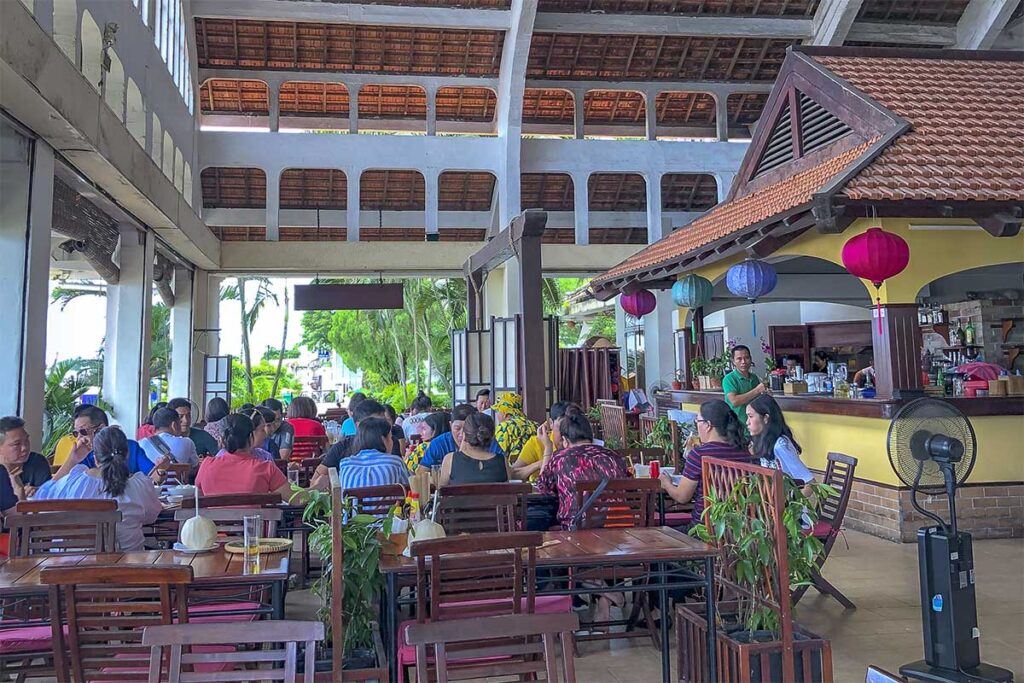
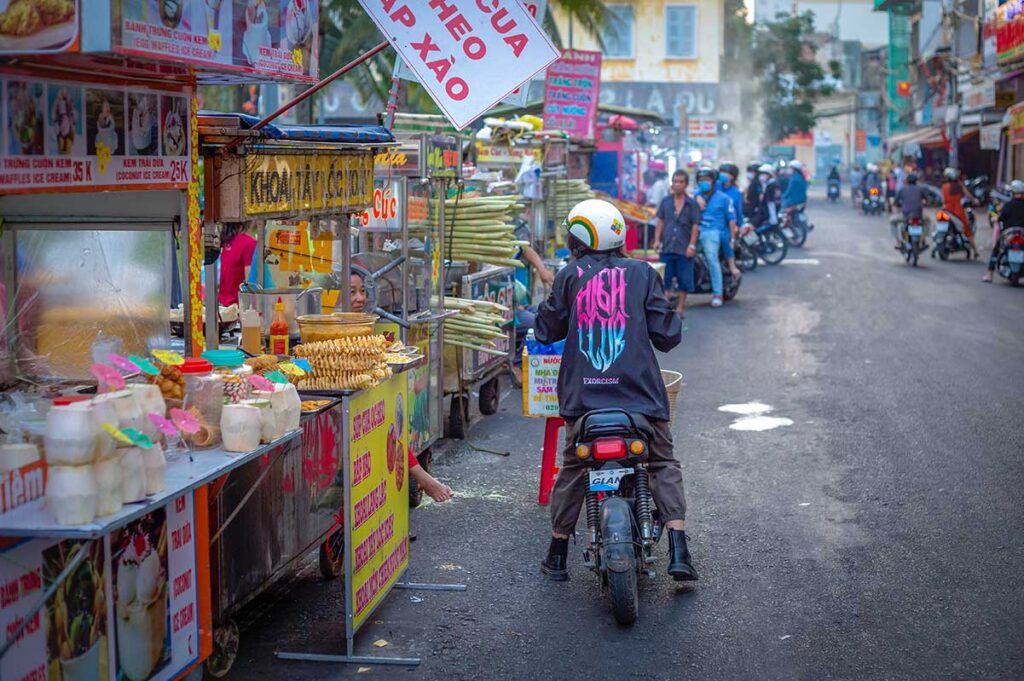
Instead of fresh produce, most of what you’ll find today are snack counters, packaged sweets, and stalls selling things like dried fruit or rice paper. It’s a convenient place to pick up something light to bring on a journey or as a small gift. There are also small eateries inside, ranging from noodle soups like Hu Tieu to grilled dishes, and even a sit-down restaurant if you prefer a meal in a more relaxed spot. The food is straightforward but affordable, and eating here gives you a taste of the market atmosphere.
3. Market at night
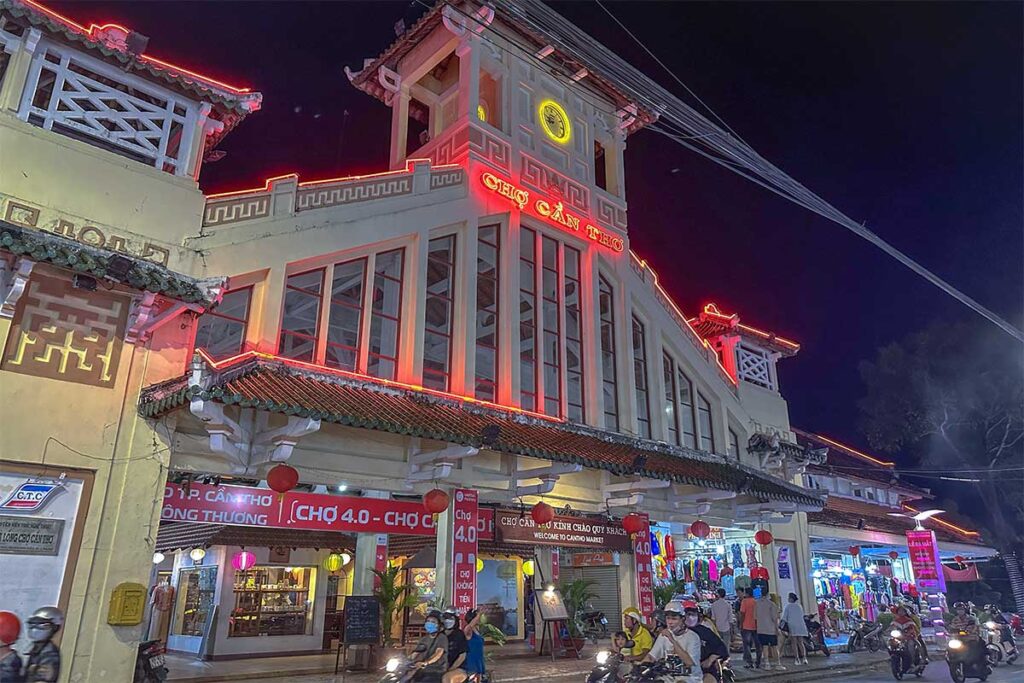
In the evening, the market takes on a different character. The riverside setting lights up, and while some of the daytime activity winds down, the area becomes part of the broader Ninh Kieu Wharf night scene. It’s a pleasant spot for an evening stroll, and although the market itself is quieter than in the morning, the combination of lights, river views, and nearby street food makes it worth including in your evening plans.
4. Tay Do Night Market (right behind Central Market)
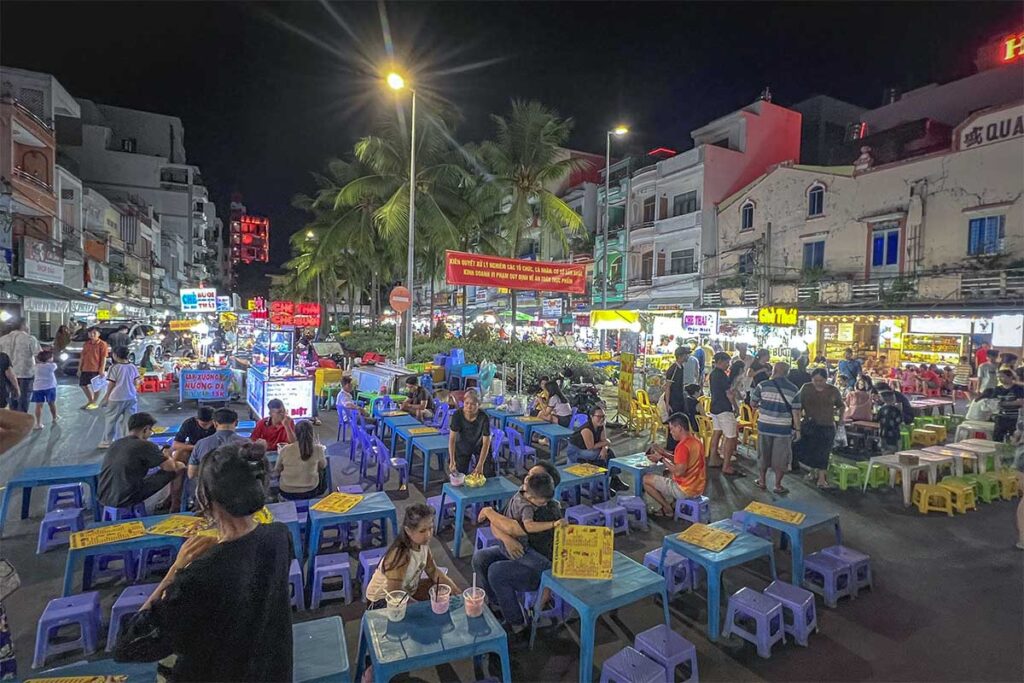
Directly behind Can Tho Market you’ll find Tay Do Night Market, which has a stronger focus on seafood and local nightlife. It’s more chaotic than the main market, with outdoor grills, plastic tables, and plenty of energy. Don’t confuse it with Ninh Kieu Night Market, which is just a few minutes’ walk away and more geared toward fashion and street snacks. Tay Do is rougher around the edges but definitely adds to the “market area” experience, especially if you’re interested in trying freshly cooked seafood.
5. Riverside setting & Views
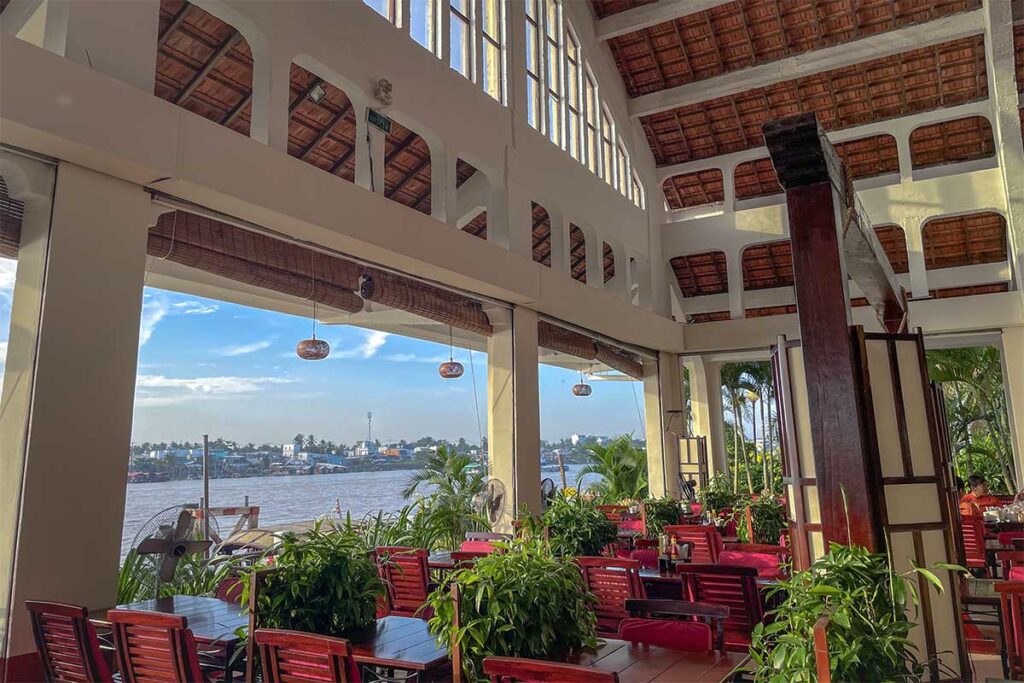
One of the best things about Can Tho Market is simply where it stands—right along the Hau River at Ninh Kieu Wharf. The location means you’re not just walking through stalls, but also stepping out into a lively riverside promenade with a park, cafés, and boats passing by. From the upstairs restaurant at the back of the market, you can even get wide views over the river, making it a pleasant place to pause for a drink or a meal.
Other markets in Can Tho
Can Tho is more famous for its floating markets than its land markets, but they’re not as authentic as they once were. Cai Rang still attracts visitors but is smaller and more tourist-focused these days, while Phong Dien has almost disappeared. Beyond the floating markets, the city has several traditional land markets that remain important for locals and can be interesting to explore.
1. Cai Rang Floating Market
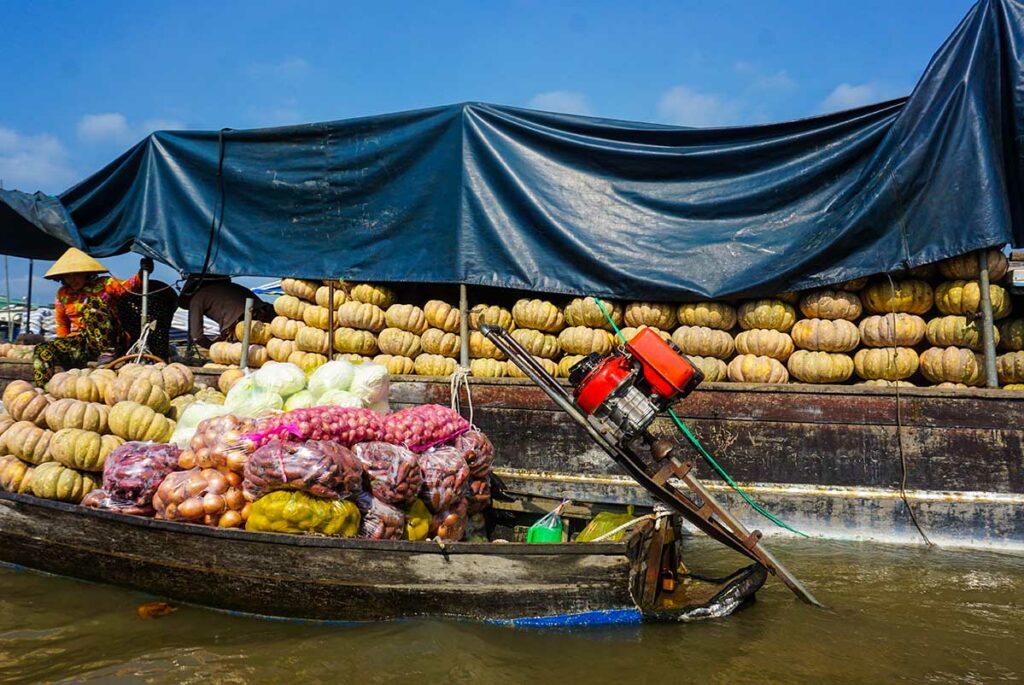
Cai Rang is the most famous floating market in the Mekong Delta and often the main reason travelers come to Can Tho. Boats loaded with fruit and produce gather in the early morning, with sellers advertising their goods by hanging samples on poles. While it’s far smaller than it used to be and more tourist-oriented now, it’s still worth experiencing around 5–6 AM for a glimpse of river life and the chance to have breakfast on the water.
2. Phong Dien Floating Market
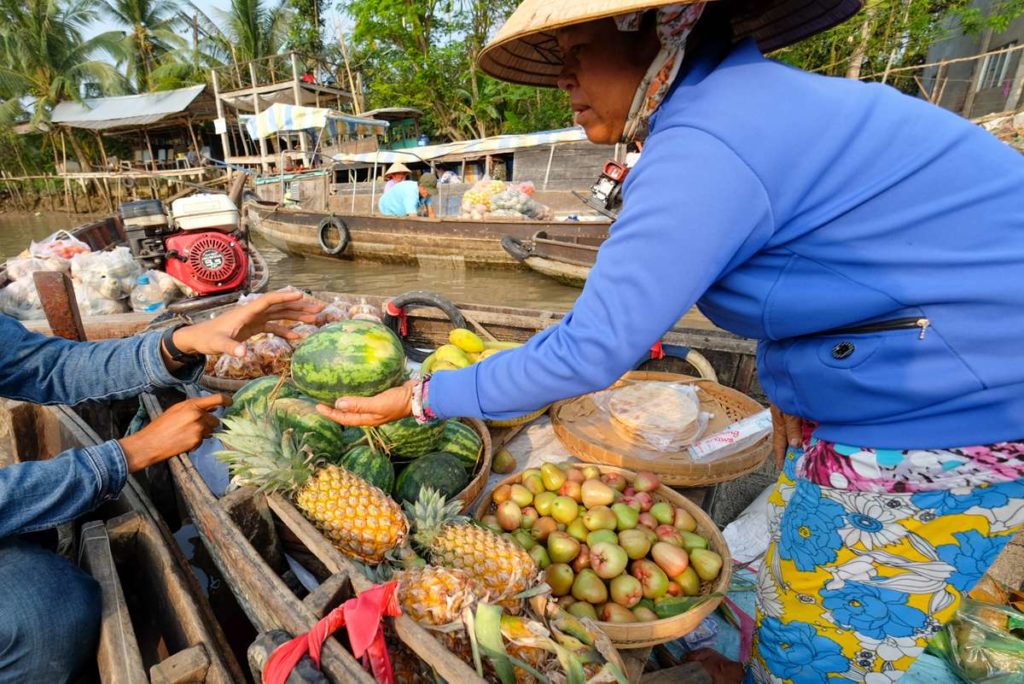
Once considered a more authentic alternative to Cai Rang, Phong Dien Floating Market has almost disappeared. Only a handful of boats show up these days, and most visitors are disappointed if they come expecting the vibrant scenes of the past. Unless you’re particularly curious, it’s probably not worth the effort to get here.
3. Tan An Market
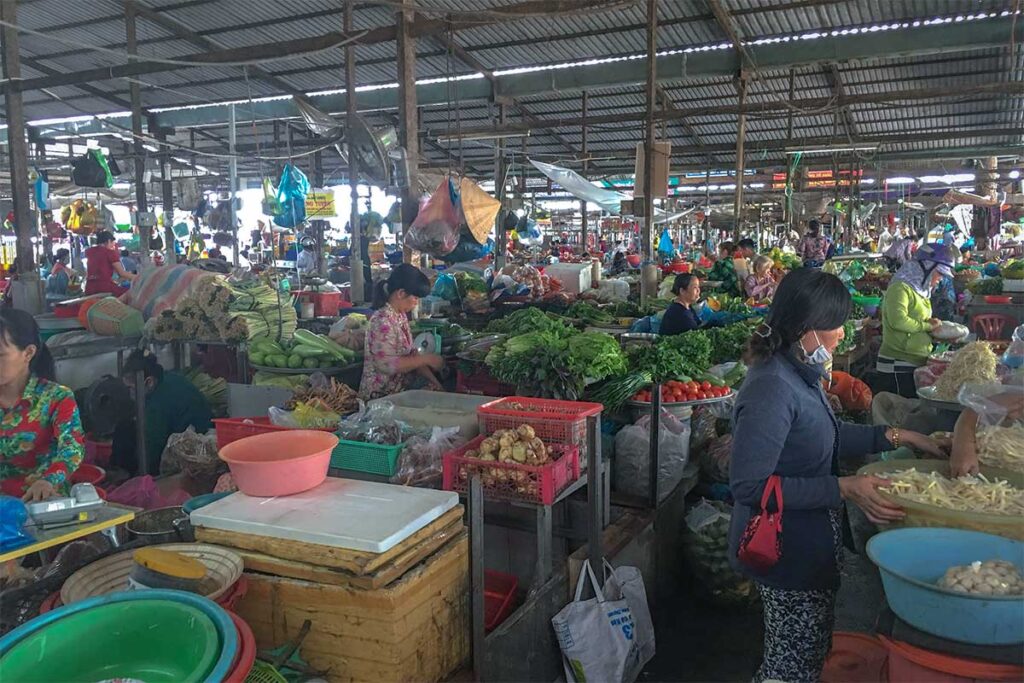
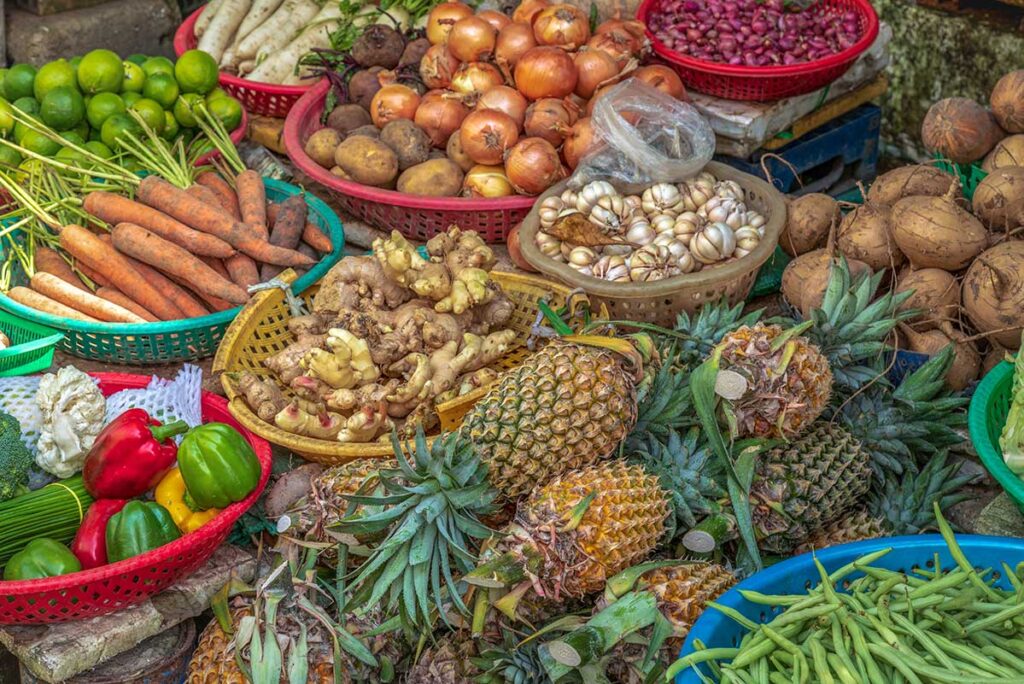
Tan An is one of the oldest wholesale markets in Can Tho, known for its role as a major supplier for smaller markets in the region. It’s busy and noisy, filled with seafood, fruits, and vegetables. Tourists don’t usually shop here, but if you want to see a working wholesale market in action, it’s an interesting stop.
4. An Binh Market
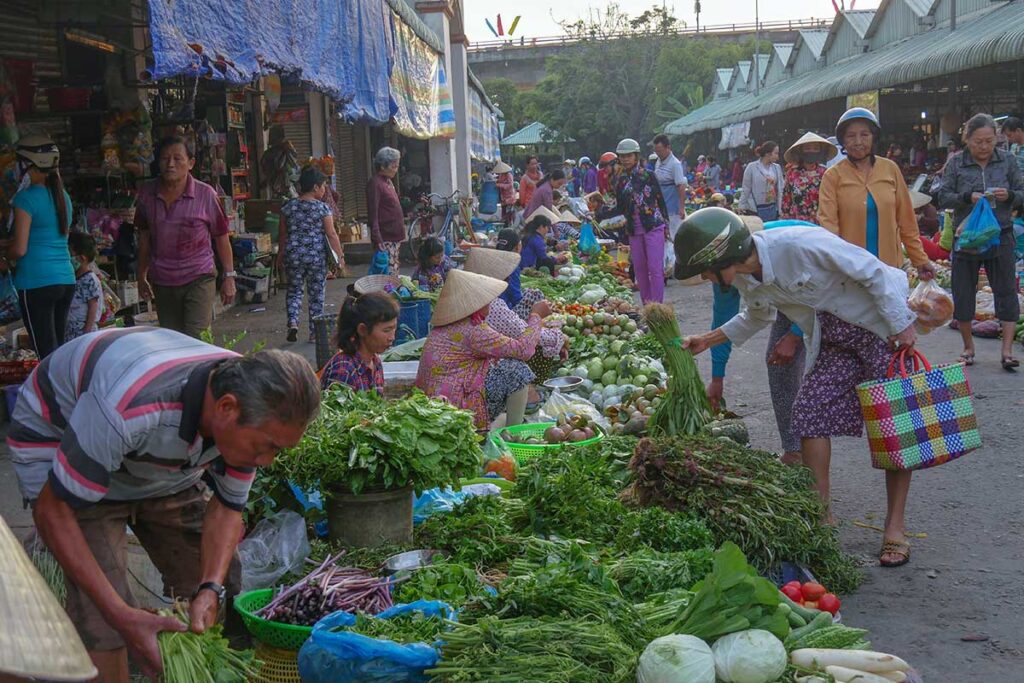
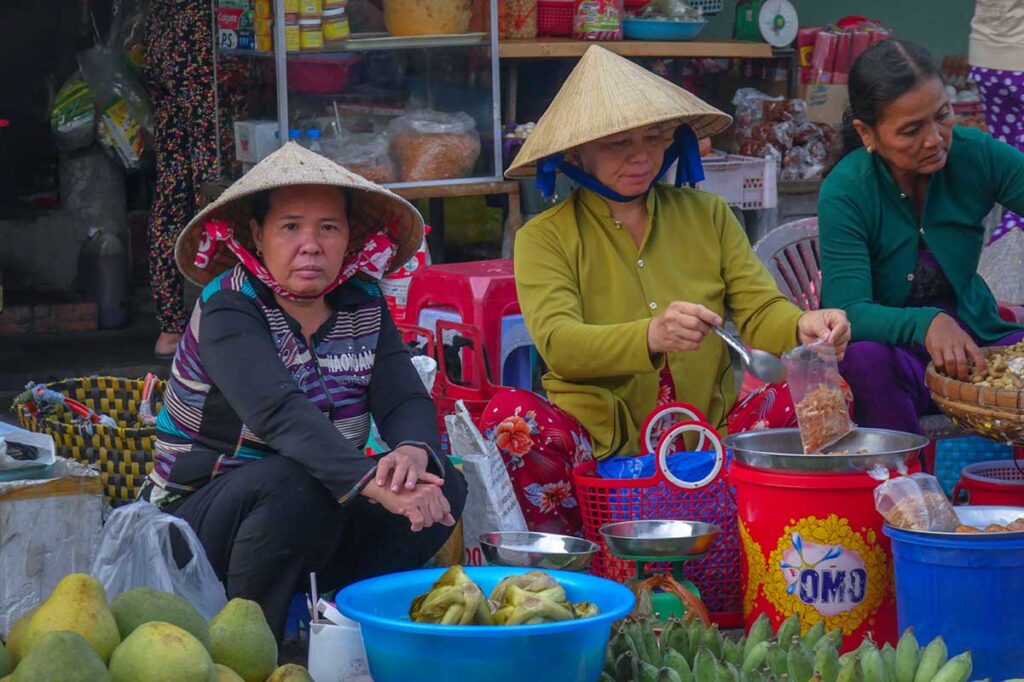
An Binh Market is a hundred-percent local market that rarely appears in tourist itineraries. It’s smaller than others, but that’s part of its charm—you’ll find fresh food and fruits at good prices and a more authentic daily atmosphere. If you want to avoid tourist crowds and see where locals really shop, An Binh is a good choice.
5. Cai Khe Market
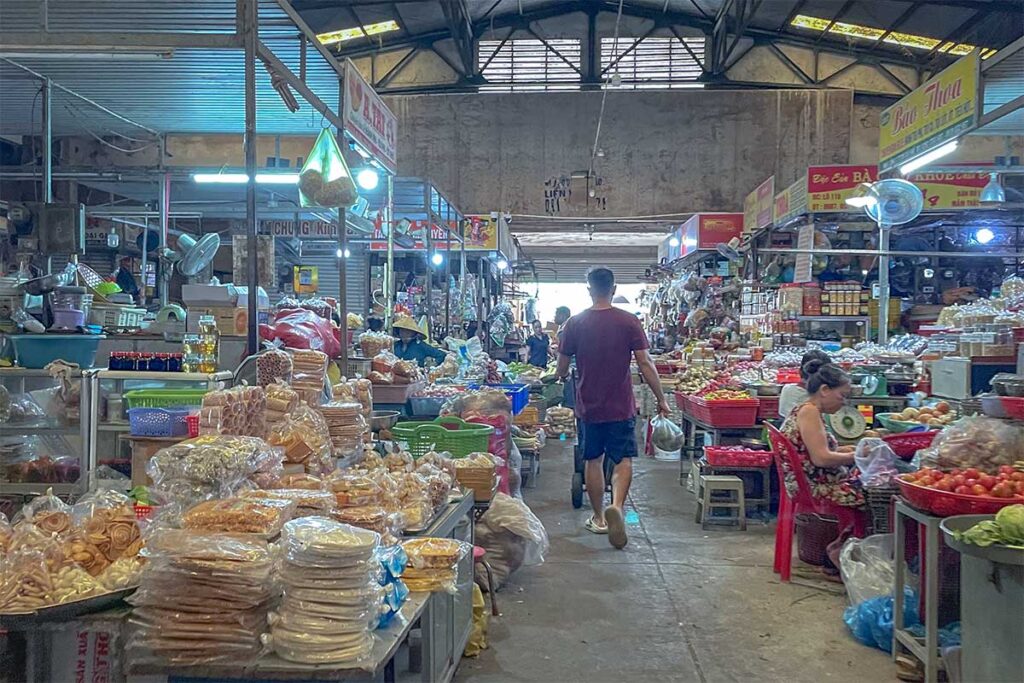
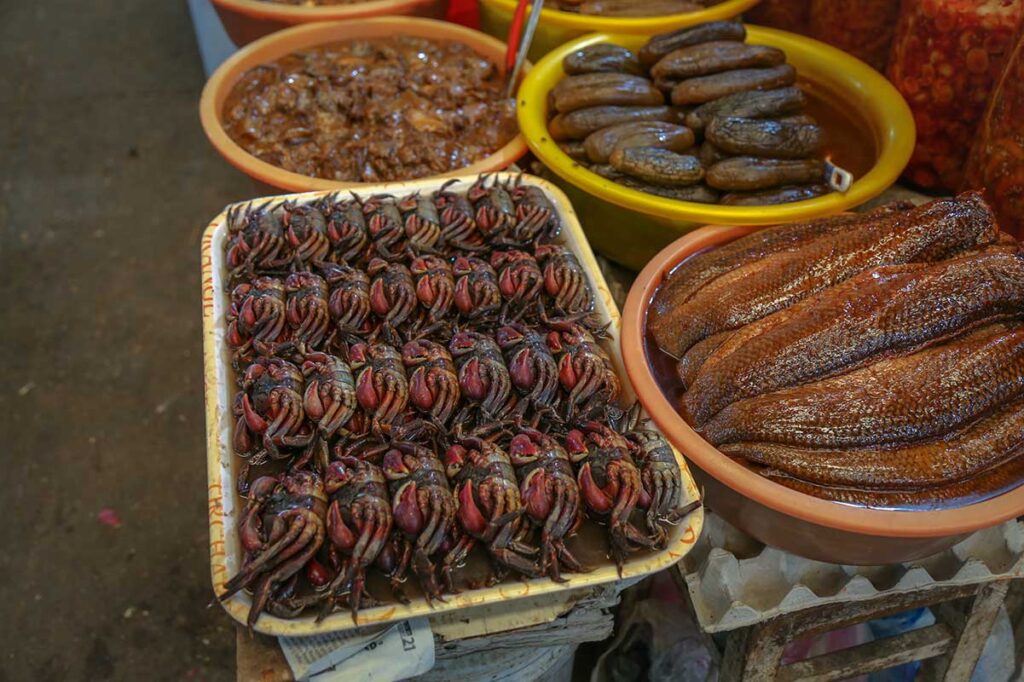
Before shopping malls arrived, Cai Khe was the main trade center of Can Tho. It’s still one of the largest land markets in the city, divided into sections for clothes, shoes, and food. There’s also a long-established food court with dishes that locals have eaten here for decades.
6. Xuan Khanh Market
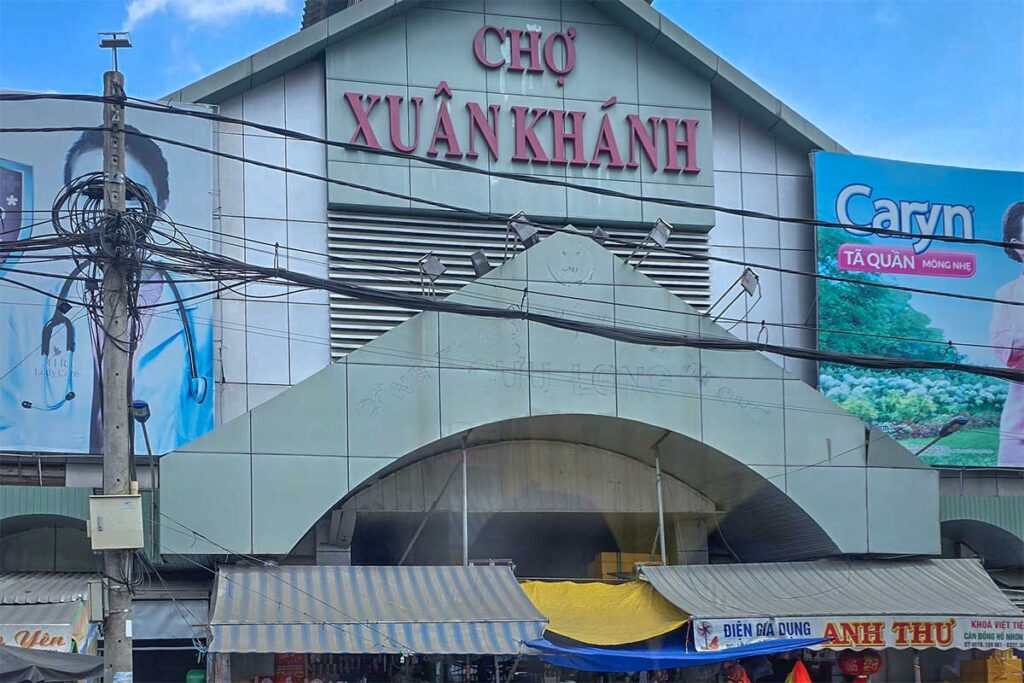
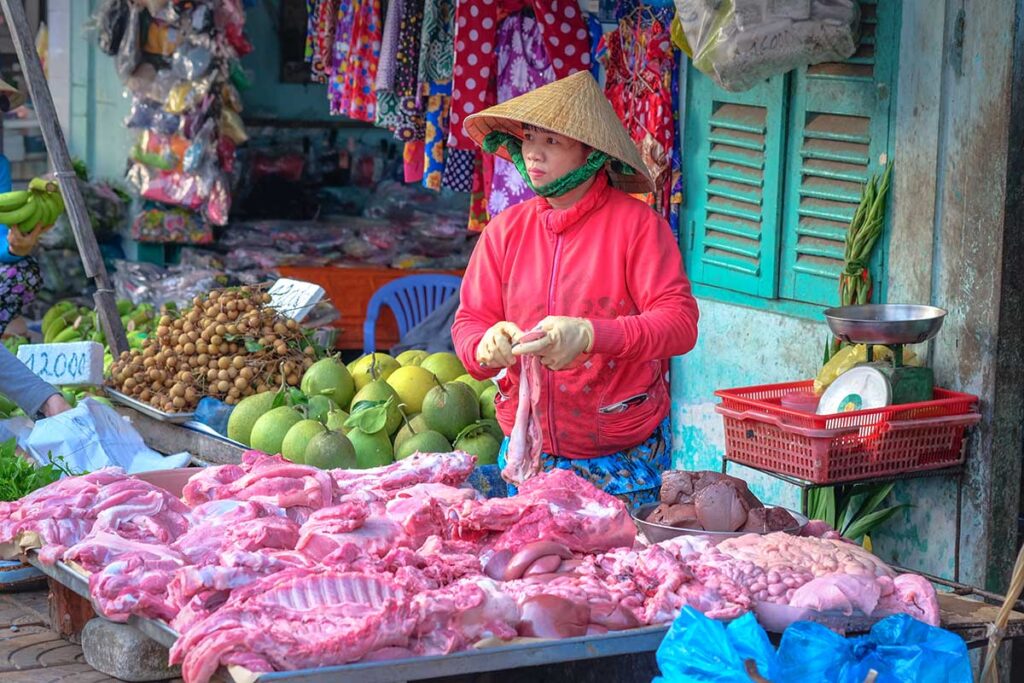
Xuan Khanh Market is smaller and more convenient, located right in the city center. It’s known for fresh fruit and coffee, and many visitors mention the friendliness of the vendors. If you’re short on time, this market gives you a quick look at local shopping without having to go far out of your way.
Practical tips for visiting Can Tho Market
Location
Can Tho Market (sometimes called the Old Market) is located at 138 Hai Ba Trung Street, right on the riverfront at Ninh Kieu Wharf. It’s in the heart of the city, so you can easily combine it with other nearby sights on foot.
Opening hours
The market officially opens from 6:00 AM to 9:00 PM every day. Mornings are the busiest, with locals shopping for fresh produce, while evenings feel calmer and more atmospheric as the riverside lights come on.
Best time to visit
- Morning (6–9 AM): Best for seeing daily life, buying fresh fruit, and experiencing the market at its liveliest.
- Evening (6–9 PM): Best for atmosphere, especially if you want to combine it with a riverside walk or nearby night markets.
Payment
Most stalls accept cash only, and vendors usually prefer smaller notes. Bring Vietnamese dong in low denominations if you plan to buy fruit, snacks, or small souvenirs.
What to combine with
Thanks to its central location, the market can easily be paired with:
- A stroll along Ninh Kieu Wharf.
- Visits to Ong Pagoda, Can Tho Museum, or Munirangsyaram Pagoda, all within a short walk.
- Evening street food or seafood at Tay Do Night Market, just behind the main market.
